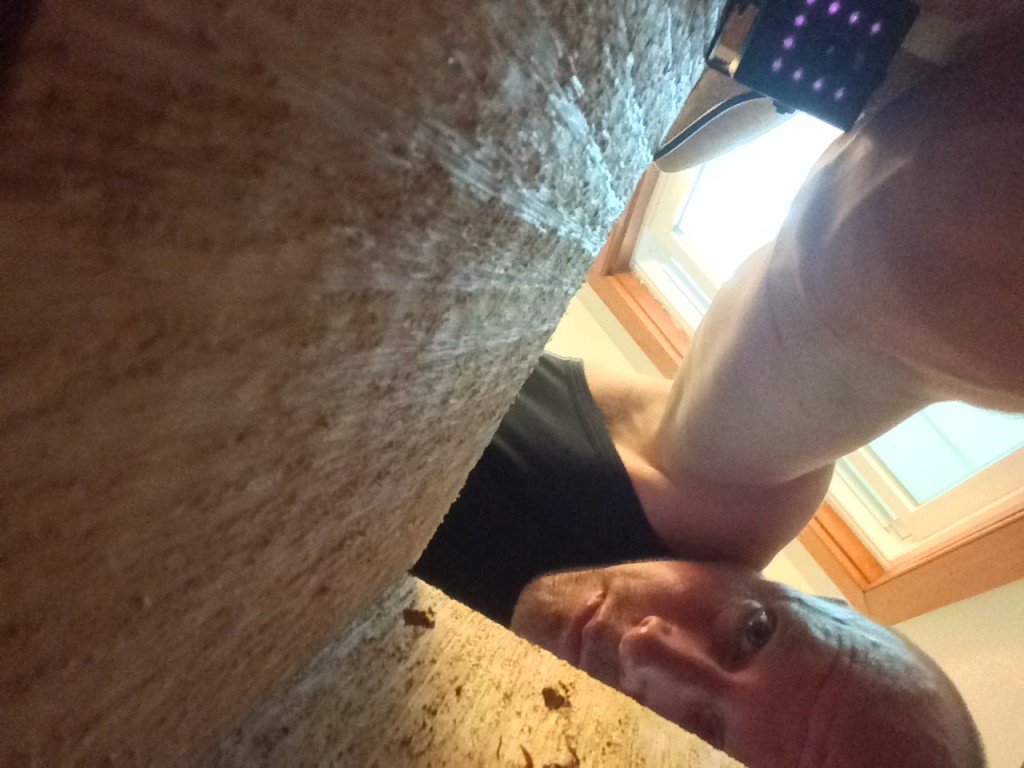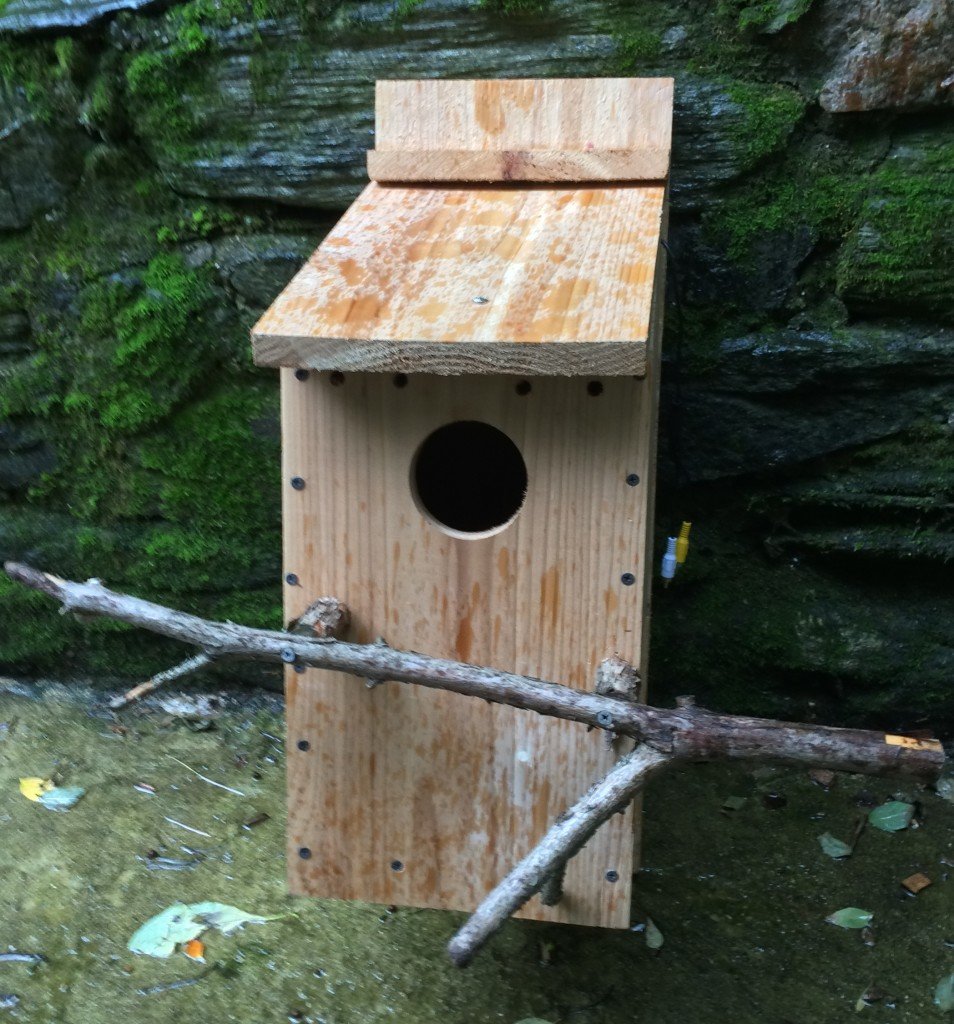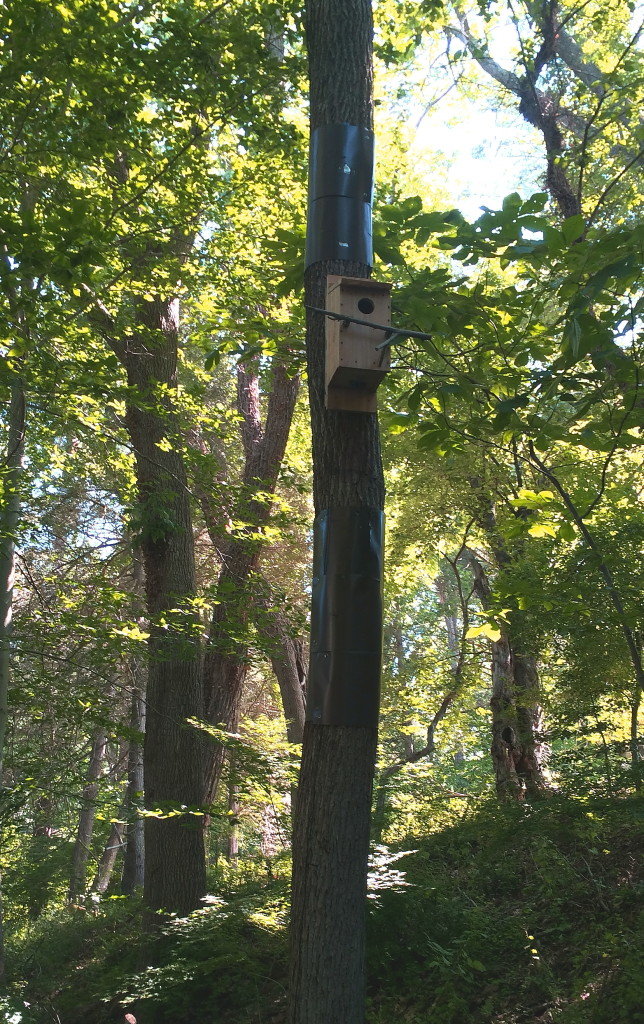The Continuing Story of the Hildacy Screech Owls
By Mike Coll, Hildacy Farm Preserve Manager
When I last wrote about the owls in the Hildacy nest box it was in March of this year and I was hopeful that the pair would attempt to breed again and would this time be more successful than they were in 2014. The pair in fact did make another attempt but unfortunately this year’s nest again produced no young.
The particulars of this year’s story begin with the female owl (the red phase owl) roosting in the box every day this spring except for one and on that day I observed the gray male owl in the box. I took this to be a sign that the pair had mated again and a week or so later the female began laying eggs.
However, unlike the previous year, this year I never saw the male owl again. The female, who should have been spending almost all of her time incubating the eggs (while being fed by the male), was instead forced to go out at night and hunt for herself. I once even observed her calling from the box, which is the opposite of the secrecy that birds usually display once they have laid eggs. My guess is that the male owl met an unfortunate fate. He may have been hit by a car or killed by a local Great Horned Owl, but it seems very unlikely that he would have abandoned his mate at such a crucial point.
When it became apparent that the male owl was not going to return, I made a somewhat futile attempt to act in his stead. Adult owls consume about one mouse per night, so I decided (after discussing the situation with wildlife rehabers at the Wildlife Clinic at the Schuylkill Center) that I would purchase frozen mice online (normally marketed to people feeding pet snakes) and supplement her diet the way the male owl would have. Each night I thawed out a mouse, waited for the owl to leave the box, and tossed the mouse into the box with the help of a long pole. It seemed like she started to expect these feedings and was able to spend much more time incubating and less time hunting. Eventually I decided that it would be less invasive to place the mouse out in front of the box and let her come grab it herself. Here is the slow-mo footage of her coming to get a mouse, captured with an infrared camera:
I continued feeding her for the better part of a month but the eggs never hatched and one day she simply abandoned the nest. I think it is likely that the eggs were either never actually fertilized by the male or that they were unable to survive the first few cold nights (before I started feeding her) when the owl was out hunting.
While this is obviously a disappointing result, I think it illustrates how precarious each year’s breeding cycle is. All factors must be accounted for in order for a species to successfully reproduce and many times this does not occur for one reason or another.
But, there is always next year and with that in mind I took the opportunity to replace the old box with a new more structurally sound version that also contains an upgraded HD camera.



The new camera has a larger bank of infrared lights, higher resolution and provides much more clear audio than the previous one.
After abandoning her nest, I didn’t see the owl at all during the summer. But a few nights ago I heard a Screech Owl calling from behind my house and then on 9/27 she spent the day roosting in the new box. Hopefully, this owl will continue to use this box as a roost throughout the winter and then locate a new mate in the spring.
